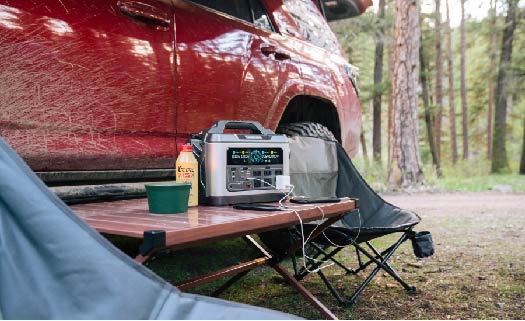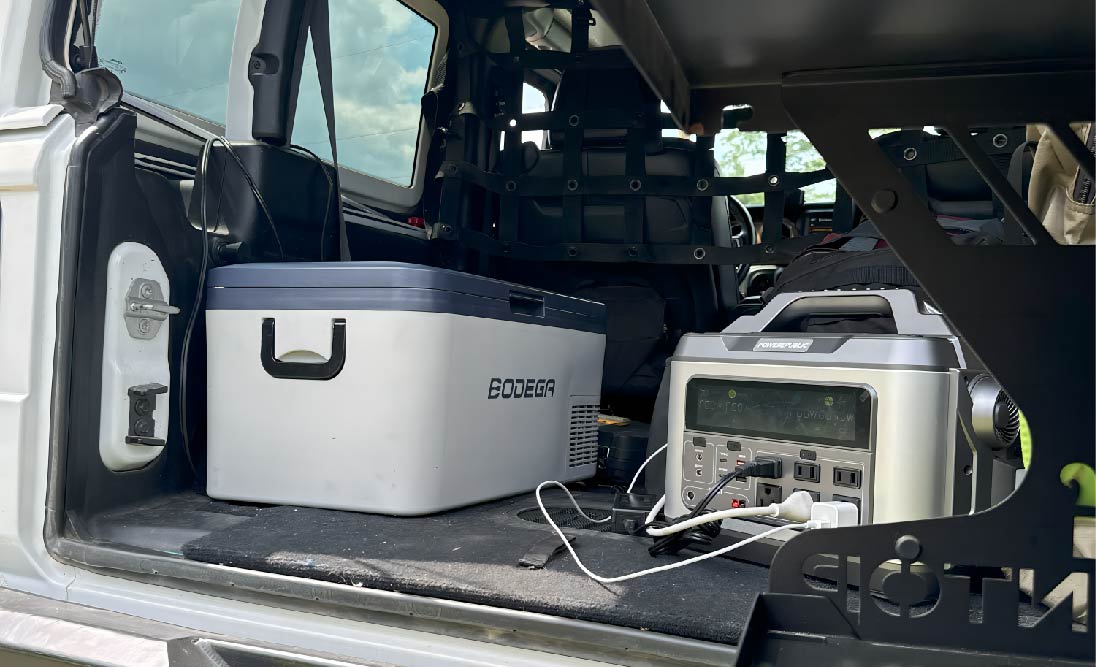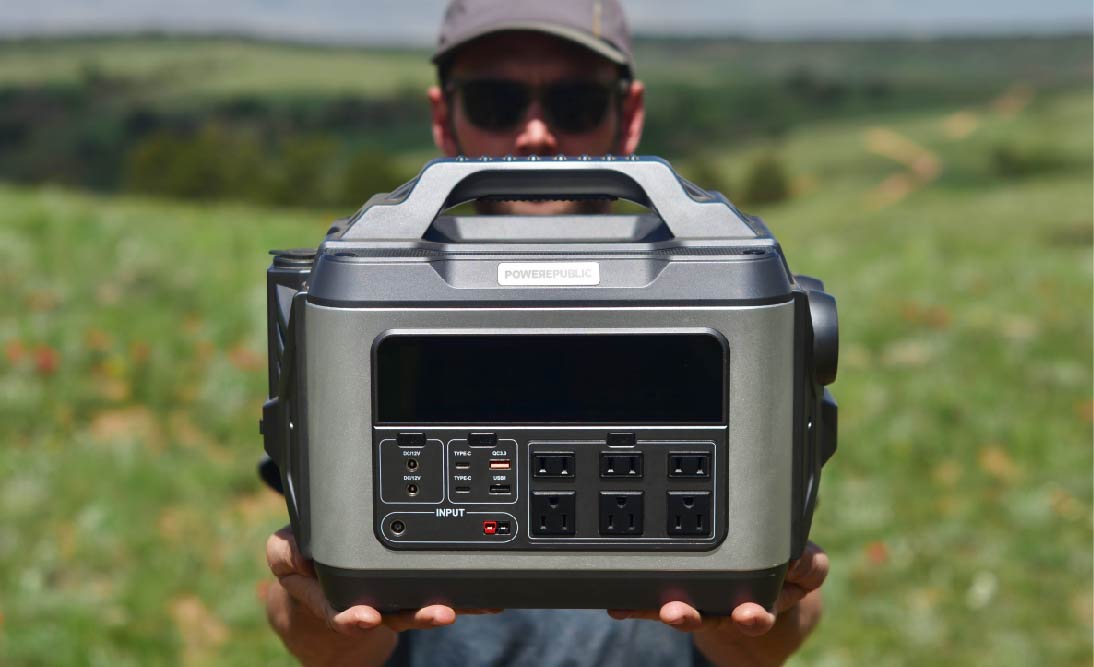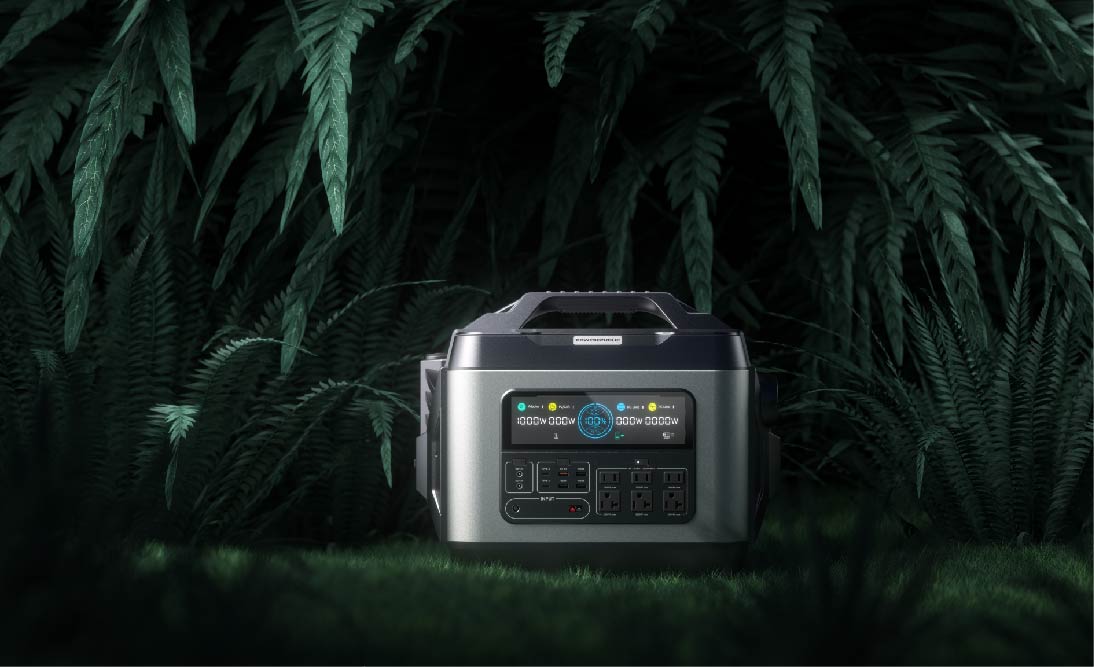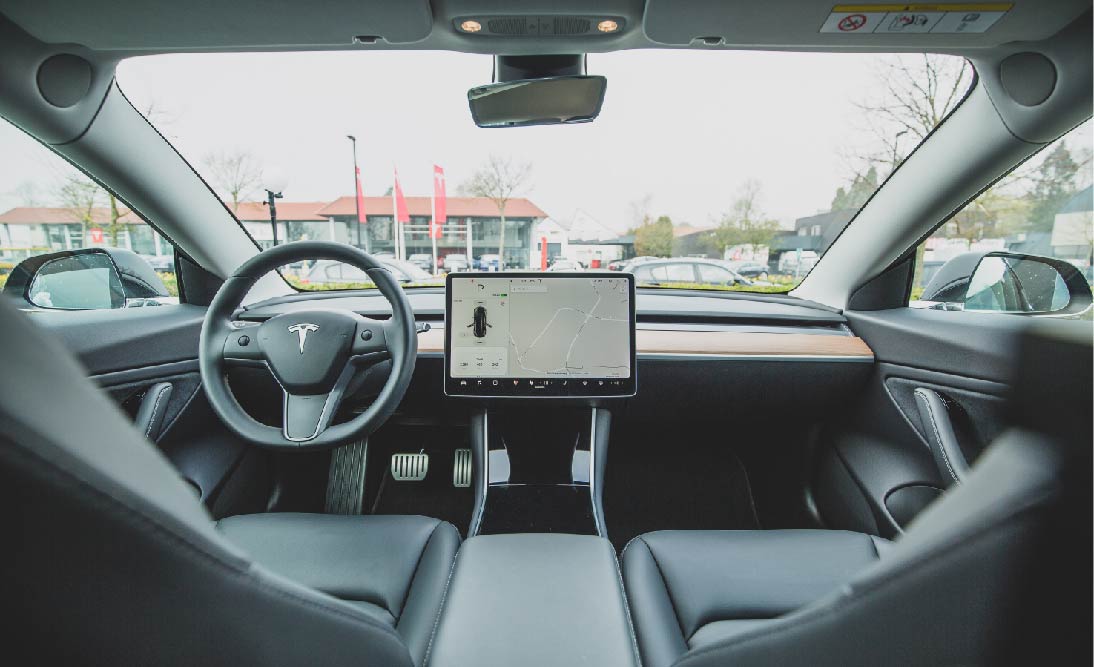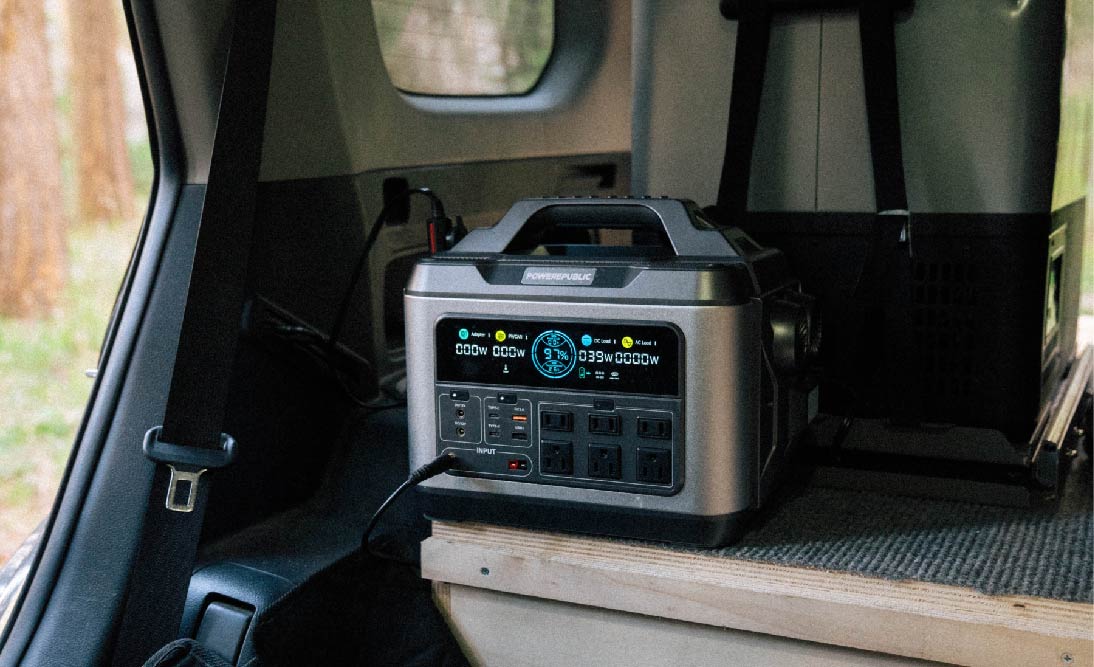Table of Contents:
-
Solar Rechargeable Batteries Vs. Rechargeable Batteries: Similarities and Differences
-
Can Solar Generators Function Like Solar Rechargeable Batteries?
-
FAQ II: How Many Solar Batteries are Needed to Power a House?
In the evolving landscape of renewable energy, solar rechargeable batteries have emerged as a cornerstone for sustainable power solutions. These batteries, pivotal in harnessing the sun's infinite energy, offer a greener alternative to traditional power sources, aligning with the global shift towards environmental responsibility. This guide delves into the comprehensive world of solar rechargeable batteries, highlighting their strengths, limitations, and how they compare to conventional rechargeable batteries.
Whether you're navigating the selection process for the best solar rechargeable batteries or curious about their integration with solar generators, our insights will illuminate the path. Moreover, we address the most pressing queries, including the lifespan of a solar battery, the required number to power a home, and the setup process for connecting a solar panel to a battery. With a focus on POWEREPUBLIC solar generators, this discussion aims to equip you with the knowledge to make informed decisions about solar rechargeable batteries, a critical component in the quest for renewable energy solutions.
Solar Rechargeable Batteries Overview
Solar rechargeable batteries represent a significant leap forward in the quest for clean, renewable energy. These batteries are designed to store energy harvested from the sun, offering a sustainable alternative to fossil fuels and traditional power sources. By capturing solar energy through photovoltaic cells during the day, solar rechargeable batteries enable the stored power to be used when sunlight is not available, ensuring a consistent energy supply without the environmental toll associated with conventional energy production.
What Are They?
Solar rechargeable batteries are specialized batteries that store electrical energy generated by solar panels. They are a key component in solar energy systems, allowing for the storage of excess solar power for use during nighttime, cloudy days, or peak energy demand periods. This capability makes solar energy a more reliable and consistent power source, bridging the gap between solar energy production and consumption.
How Do They Work?
The operation of solar rechargeable batteries involves several key steps:
-
Energy Capture: Solar panels convert sunlight into direct current (DC) electricity.
-
Energy Storage: The DC electricity is then stored in solar rechargeable batteries for later use.
-
Energy Conversion: When needed, the stored DC electricity is converted to alternating current (AC) through an inverter, making it usable for household or commercial devices.

Applications & Scenarios
Solar rechargeable batteries have a wide range of applications, from residential to commercial and industrial settings. In homes, they provide power during the night or on overcast days, ensuring energy independence and reducing electricity bills. For businesses and remote industrial sites, they offer a reliable power source that can reduce operational costs and carbon footprints. Furthermore, in off-grid scenarios or disaster-prone areas, solar rechargeable batteries can be life-saving, providing critical power when traditional sources fail.
Price Range
The cost of solar rechargeable batteries varies widely based on capacity, technology (e.g., lithium-ion vs. lead-acid), and brand. Prices can range from a few hundred dollars for smaller, portable units to several thousand dollars for large, high-capacity systems designed for home or commercial use. For example, a typical home solar energy storage system might cost anywhere from $5,000 to $15,000, depending on the system's size and specifications.
Examples and Calculations
Consider a household that consumes an average of 30 kWh of electricity per day. To ensure a fully off-grid solution, the household decides to install solar rechargeable batteries with a total capacity of 90 kWh, providing three days' worth of autonomy. Assuming the cost per kWh of storage capacity is around $500 (a rough estimate for high-quality lithium-ion batteries), the total investment for the batteries alone would be approximately $45,000.
This calculation does not include the cost of solar panels, inverters, and installation, which can significantly increase the initial investment. However, the long-term savings on electricity bills and the potential for tax incentives and rebates can offset the initial cost over time.
Solar rechargeable batteries are more than just an energy solution; they are a commitment to a sustainable future. By integrating solar rechargeable batteries into energy systems, individuals and businesses can significantly reduce their carbon footprint, contribute to the global shift towards renewable energy, and enjoy the financial and environmental benefits of solar power.
Strengths and Limitations of Solar Rechargeable Batteries
Strengths of Solar Rechargeable Batteries
Sustainability and Environmental Impact:
-
Solar rechargeable batteries harness the sun's energy, a plentiful and renewable resource, reducing reliance on fossil fuels and lowering carbon emissions. For instance, if a single household switches to solar energy, it can save approximately 1 ton of CO2 per year, depending on the region and energy usage.
Energy Independence:
-
Using solar rechargeable batteries for energy storage offers independence from the utility grid. This is particularly advantageous during power outages or in remote areas without reliable grid access. For example, homes equipped with a solar battery system can maintain power during outages, providing peace of mind and security.
-
For example, a household installs a solar system with a battery capacity of 10 kWh, designed to cover 100% of their daily energy usage. On a sunny day, the system generates 12 kWh, fully charging the battery and providing surplus energy for the home. During the night, the stored energy powers the home, ensuring no reliance on the grid.
Reduced Electricity Bills:
-
Solar rechargeable batteries store excess solar power generated during the day for use at night or during peak demand times when electricity rates are higher. A typical household might reduce their electricity bill by 50-75%, depending on their system's size and their energy consumption patterns.
-
For example, if the average electricity rate is $0.13 per kWh and a household uses 900 kWh per month, their bill would be approximately $117. By generating and storing 30% of their energy needs through solar rechargeable batteries, they could save around $35 monthly or $420 annually.

Limitations of Solar Rechargeable Batteries
Initial Cost and ROI:
-
The initial investment in solar rechargeable batteries can be substantial. A complete residential solar system might cost between $5,000 to $15,000 or more. While tax incentives and rebates can offset some costs, the return on investment (ROI) varies, typically ranging from 5 to 15 years, depending on local electricity rates and solar production.
-
For example, assuming the total cost for a solar battery system is $10,000 after incentives, and the household saves $420 annually on electricity, the ROI period would be around 24 years. However, increases in electricity rates and additional savings from peak demand rates could shorten the ROI period significantly.
Maintenance and Lifespan:
-
Solar rechargeable batteries require maintenance to ensure optimal performance, and their lifespan varies by type. Lithium-ion batteries, for instance, may last 10-15 years, whereas lead-acid batteries may need replacing every 5-7 years. Regular maintenance and eventual replacement add to the total cost of ownership.
Energy Storage Capacity:
-
The capacity of solar rechargeable batteries limits how much solar energy can be stored at any given time. For households with high energy demands or those in regions with less sunshine, larger or additional battery systems may be necessary, increasing costs and space requirements.
In short, solar rechargeable batteries offer a promising path towards renewable energy adoption and sustainability. Despite the challenges related to initial costs, maintenance, and energy storage capacity, the benefits of reduced carbon footprint, energy independence, and long-term savings present a compelling case for their use. As technology advances and costs decrease, solar rechargeable batteries will likely become an even more integral part of global energy solutions.
Solar Rechargeable Batteries Vs. Rechargeable Batteries: Similarities and Differences
The transition towards renewable energy sources has spotlighted solar rechargeable batteries as a sustainable alternative to conventional rechargeable batteries. Both play critical roles in our daily lives, powering everything from household appliances to electronic devices, yet they operate on fundamentally different principles and serve distinct purposes within the broader context of energy consumption and environmental stewardship.
Similarities
-
Energy Storage: Both solar rechargeable batteries and conventional rechargeable batteries store electrical energy for future use. This shared characteristic is pivotal, enabling the use of portable electronic devices, emergency power backups, and energy reserves for renewable energy systems.
-
Reusability: A key advantage of both battery types is their reusability. Unlike disposable batteries, solar rechargeable batteries and their conventional counterparts can be charged and discharged many times, reducing waste and promoting a more sustainable consumption model.
-
Applications: Both types of batteries find applications in a range of settings, from residential to commercial and industrial. They power devices and systems where direct access to electricity is impractical or unavailable, showcasing their versatility.

Differences
-
Energy Source: The most significant difference lies in their energy source. Solar rechargeable batteries are specifically designed to store energy generated from solar panels. This direct harnessing of renewable solar energy contrasts with conventional rechargeable batteries, which are typically charged using electricity from the grid, often generated from non-renewable sources.
-
Environmental Impact: Solar rechargeable batteries have a markedly lower environmental impact over their lifecycle compared to conventional rechargeable batteries. By utilizing solar power, they contribute significantly less to carbon emissions and the depletion of finite resources, aligning with global efforts to mitigate climate change.
-
Cost and Investment: Initial setup and investment costs present another point of divergence. Solar rechargeable batteries, part of a solar energy system, require a more substantial upfront investment than most conventional rechargeable batteries. This includes the cost of solar panels, inverters, and installation. However, the long-term savings on energy bills and potential tax incentives can offset these initial costs, offering a financially viable solution over time.
Example of Energy Savings Calculation:
Consider a household that installs a solar panel system with solar rechargeable batteries. If the system costs $15,000 and saves the household an average of $100 per month on electricity bills, the payback period would be 150 months or about 12.5 years. This calculation does not factor in potential increases in utility rates, which could shorten the payback period, nor does it consider government rebates or tax incentives, which could further reduce the upfront cost.
In contrast, conventional rechargeable batteries, such as those used in gadgets and appliances, typically have lower individual costs and shorter payback periods based on their specific uses but do not offer the same level of savings on household energy expenses or environmental benefits.
So while solar rechargeable batteries and conventional rechargeable batteries share some operational similarities, their differences in energy sources, environmental impacts, and costs highlight the unique roles they play in our transition towards sustainable energy solutions. As the technology for solar rechargeable batteries continues to advance and become more cost-effective, their integration into our energy systems is likely to increase, further distinguishing them from their conventional counterparts in both functionality and impact.
How To Choose The Best Solar Rechargeable Batteries?
Selecting the best solar rechargeable batteries is a critical decision in the journey toward sustainable energy solutions. These batteries serve as the backbone of solar energy systems, storing the power generated by the sun for use during periods without sunlight. Given their importance, it's essential to pay attention to the following factors to ensure that you choose the right solar rechargeable batteries.

1. Capacity and Power Rating of Batteries
Solar rechargeable batteries' capacity, expressed in kilowatt-hours (kWh), reveals the amount of electricity they are capable of storing. To identify the optimal capacity for your needs, it's important to first calculate your daily energy consumption.
For instance, if a household uses about 30 kWh daily, selecting a system with a capacity just above this figure is advisable to ensure adequate power availability, especially during less sunny periods. Conversely, the power rating, measured in kilowatts (kW), specifies the maximum amount of electricity a battery can output simultaneously. Batteries with higher power ratings are capable of operating a greater number or larger scale of appliances at once.
2. Efficiency and Depth of Discharge (DoD)
The Depth of Discharge (DoD) metric tells you the percentage of the battery's total capacity that can be utilized without adversely affecting its longevity. For example, a battery that boasts a 90% DoD enables the use of 90% of the energy it has stored.
Typically, selecting a battery with a high DoD is advised. Efficiency, on the other hand, measures the proportion of stored energy that can be effectively used, with a 90% efficiency battery providing access to 90% of the energy it holds. A higher efficiency rating translates to greater electricity usability and reduced energy loss.
3. Warranty and Battery Lifespan
The durability of solar rechargeable batteries is gauged in either years or the number of charge cycles they can endure before replacement is necessary. Assessing both the expected lifespan of the battery and the warranty duration provided by the manufacturer is essential. For instance, some batteries may operate beyond 10 years or endure over 5,000 cycles, accompanied by a warranty lasting 10 years.
4. Cost
While the initial cost is an important consideration, it's also essential to calculate the long-term value. Consider both the upfront cost and the cost per cycle of the battery. For example, if a solar rechargeable battery costs $10,000 and has an effective life of 10,000 cycles, the cost per cycle is $1.
5. Compatibility with Solar Energy Systems
Ensure the solar rechargeable batteries you're considering are compatible with your solar panel system's voltage and the inverter. This will prevent system inefficiencies or the need for additional equipment.
6. Examples of Choosing the Best Solar Rechargeable Batteries:
-
For a Small Household: A small home with minimal energy needs might opt for a battery system with a capacity of 5-10 kWh, focusing on high efficiency and a reasonable DoD to cover nightly usage and occasional cloudy days.
-
For a Large Household: A larger household or one with higher energy demands might require a system with a capacity of 20-30 kWh, emphasizing both capacity and power rating to ensure all household needs are met, even during peak usage times.
-
For Off-Grid Living: For those living off-grid, selecting batteries with a high capacity, excellent efficiency, and a very high DoD is crucial. A system with a 30-50 kWh capacity might be appropriate, ensuring enough power is stored to cover multiple days of energy use without sunlight.
In each case, the best choice of solar rechargeable batteries depends on individual energy needs, the local climate (which affects solar energy production), and budget considerations. By carefully evaluating these factors, you can select solar rechargeable batteries that offer reliability, efficiency, and the best value for your renewable energy system.
Can Solar Generators Function Like Solar Rechargeable Batteries?
Yes, solar generators can function similarly to solar rechargeable batteries, but there are nuanced differences and factors to consider. Both solar generators and solar rechargeable batteries play pivotal roles in the storage and supply of energy in renewable energy systems, yet they cater to slightly different needs and applications.
Why Solar Generators Can Function Like Solar Rechargeable Batteries:
Solar generators are integrated systems that typically include solar panels, a battery storage component (often lithium-ion), and an inverter within a single portable unit. They capture solar energy, convert it into electrical power, and store it for later use, mirroring the fundamental operation of solar rechargeable batteries.

Factors to Consider:
-
Capacity and Output: Solar generators are available in various sizes and power output capacities, similar to solar rechargeable batteries. The choice depends on the energy requirements of your household or devices.
-
Portability: Unlike stationary solar rechargeable battery setups, solar generators are designed for portability, offering flexibility in usage across different locations.
-
Ease of Use: Solar generators are typically plug-and-play, requiring minimal setup and technical knowledge, making them accessible for emergency power supply or recreational outdoor activities.
Pros and Cons:
Pros:
-
Versatility: Solar generators are highly versatile, suitable for use in homes, RVs, camping trips, and emergency backup power, providing a wide range of utilities similar to solar rechargeable batteries.
-
Portability: Their portable nature means they can be easily transported and used wherever needed, unlike stationary solar battery systems.
-
All-in-One Solution: Solar generators combine solar charging, energy storage, and power conversion in one device, simplifying the setup process.
Cons:
-
Limited Capacity Compared to Dedicated Systems: While effective for small-scale applications, solar generators may not offer the same level of capacity as larger, dedicated solar rechargeable battery systems designed for whole-house energy supply.
-
Cost Efficiency: For long-term, large-scale energy needs, solar rechargeable batteries paired with solar panels might offer a more cost-efficient solution due to their higher capacity and efficiency.
-
Scalability: Expanding a solar generator system's capacity can be more challenging and expensive compared to adding additional batteries to a solar battery system.
Example:
Consider a scenario where a household requires emergency backup power during outages. A portable solar generator with a capacity of 1 kWh could power essential devices like lights, and a small refrigerator, and charge mobile devices, functioning similarly to a solar rechargeable battery setup. However, for whole-house power needs, a solar system with several solar rechargeable batteries, offering a combined capacity of 10-20 kWh, would be more appropriate, albeit at a higher initial investment.
In summary, while solar generators can function like solar rechargeable batteries to a certain extent, offering a portable and convenient solution for energy storage and supply, they are typically more suited to smaller-scale, portable applications. For larger, more permanent energy needs, a dedicated system of solar panels and solar rechargeable batteries would provide a more robust and scalable solution.
Solar Rechargeable Batteries: POWEREPUBLIC Solar Generators
As we know, solar generators can function similarly to solar rechargeable batteries to a certain extent, offering a portable and convenient solution for energy storage and supply. However, they are typically more suited to smaller-scale, portable applications.
For those of you searching for solar rechargeable batteries for smaller-scale scenarios without wanting to spend too much money and time building a system, consider POWEREPUBLIC solar generators. We offer four models, each of which can be paired with portable solar panels of different wattages according to your power needs, budget, and applications. All POWEREPUBLIC portable power stations use either lithium-ion or LiFePO4 batteries.

Now, let’s take a look at each option:
1. For Short Trips (Less Than 48 Hours) - Consider the POWEREPUBLIC T306+PV100 Solar Generator
The T306 portable power station, with a 300W running power (600W surge power), 296Wh battery capacity, 10 output ports, and weighing less than 10 pounds, is one of the best options for essential devices such as cellphones, GPS devices, camera batteries, drones, and so forth.
Paired with the POWEREPUBLIC 100W portable solar panel (PV100), you can recharge the T306 model in the wild wherever you go. Both items are portable and take up little space. They are highly recommended!
2. For Camping, Vanlife, RVlife, Overlanding, and Trips with Higher Power Demand - Consider the POWEREPUBLIC T1200+PV100 or T1200+PV200 Solar Generators
The T1200 portable power station has a 1200W running power (2600W surge power), 1110Wh battery capacity, and 13 output ports, making it ideal for campers who need more power and battery for larger outdoor items such as TVs, coffee machines, blenders, electric blankets, mini-fridges/freezers, and so forth. With the T1200 model, you can easily set up your outdoor theater and kitchen wherever you roam.
Pairing with the POWEREPUBLIC 100W portable solar panel (PV100) or 200W portable solar panel (PV200), you can recharge the T1200 model within a couple of hours. The main difference between PV100 and PV200 is the dimension and solar input. If you value portability and space, consider the T1200+PV100. If you value functionality and recharging time, consider the T1200+PV200.
3. For Home Backup During Power Outages - Consider the POWEREPUBLIC T2200+PV200 or T3000+PV200 Solar Generators
The T2200 portable power station, with a 2200W running power (4500W surge power), 2240Wh battery capacity, and 15 output ports, and the T3000 portable power station, with a 3000W running power (6000W surge power), 3200Wh battery capacity, and 15 output ports, are the best options for those who need significant power and battery capacity during short-term power outages. Both models can power more than 90% of home devices and appliances, providing peace of mind during unexpected blackouts.
Paired with the POWEREPUBLIC 200W portable solar panel (PV200), you can recharge the T2200 and T3000 models once the sun is available.
Please note that:
To calculate the working time of each option, use the formula: Working Time (hours) = Battery Capacity (Wh) * 0.85 (conversion rate) / Total Power (W). For example, to power a TV (100W), an electric blanket (120W), and an LED light (10W) with the T1200+PV200, the working time would be approximately 4 hours (1110Wh * 0.85 / (100W+120W+10W)).
In general, choose the optimal option based on your power needs, lifestyle, and budget. If you don’t want to spend time building a solar system and prefer an all-in-one option, POWEREPUBLIC solar generators are a great choice for use as solar rechargeable batteries.
FAQ I: How Long Does a Solar Battery Last?
Answer: The lifespan of a solar battery depends on its type, usage, and maintenance. On average, solar batteries last between 5 to 15 years. Lithium-ion batteries, for example, can last towards the higher end of this range due to their high efficiency and durability. Regular maintenance and proper usage can extend their life even further. For instance, ensuring that a battery is not consistently drained below its recommended Depth of Discharge (DoD) can help preserve its capacity over time.

Example:
A LiFePO4 solar battery might have a life expectancy of up to 15 years or about 5,000 charge cycles. If you cycle the battery once a day, it could last approximately 13.7 years.
FAQ II: How Many Solar Batteries are Needed to Power a House?
Answer: The number of solar batteries needed to power a house varies based on the household's daily energy usage and the capacity of the batteries. First, calculate your home's daily energy consumption in kilowatt-hours (kWh). Then, choose a battery with a known kWh capacity and calculate how many such batteries you'd need to meet your energy requirements.

Example:
If your home consumes 30 kWh per day, and you're considering a battery system with each battery offering a capacity of 10 kWh, you would need at least 3 batteries to meet just one day's energy needs. For added autonomy to cover days with less sunlight or higher consumption, you might want to increase this number.
FAQ III: How to Hook Up Solar Panel to Battery?
Answer: Hooking up a solar panel to a battery involves several components, including solar panels, a charge controller, the battery, and an inverter for AC power needs. Here’s a simplified process:
-
Connect Solar Panels: Arrange your solar panels and connect them to a charge controller. The charge controller regulates the voltage and current coming from the solar panels to the battery.
-
Connect Charge Controller to Battery: Use appropriate cables to connect the charge controller's output to the battery's terminals. Ensure the polarity is correct to prevent damage.
-
Connect Battery to Inverter: If you need to power AC devices, connect the battery to an inverter to convert DC electricity into AC.
-
Final Setup: Ensure all connections are secure. Once everything is connected, your solar panels will charge the battery during the day, and the stored energy can be used as needed.

Example:
Assuming you have a 100W solar panel and a 12V battery with a capacity of 50Ah (600Wh). With ideal sunlight conditions, the panel can generate approximately 0.3kWh per day (assuming 3 peak sun hours). To fully charge the battery, you would need roughly two days of full sunlight.
Final Thoughts
In conclusion, solar rechargeable batteries represent a pivotal advancement in the realm of renewable energy, offering a sustainable and efficient alternative to conventional power sources. These batteries are crucial for harnessing and storing the sun's energy, providing a reliable power supply that ensures energy independence and reduces carbon emissions. Whether for residential, commercial, or industrial applications, solar rechargeable batteries facilitate a seamless transition to green energy, contributing significantly to the global shift toward environmental stewardship.
From powering homes during outages to supporting small-scale portable applications with solar generators, the flexibility and versatility of solar rechargeable batteries are unmatched. By understanding factors that influence their performance, lifespan, and overall value—such as capacity, efficiency, and compatibility with solar systems—individuals and businesses can make informed decisions, selecting the best solar rechargeable batteries to meet their energy needs. For those looking for a compact and convenient option, POWEREPUBLIC solar generators stand out as a great choice. As the technology continues to evolve, the role of solar rechargeable batteries in achieving a sustainable future becomes increasingly integral, highlighting their importance in the ongoing journey towards clean, renewable energy solutions.
Choose POWEREPUBLIC Solar Generators as Solar Rechargeable Batteries!
















